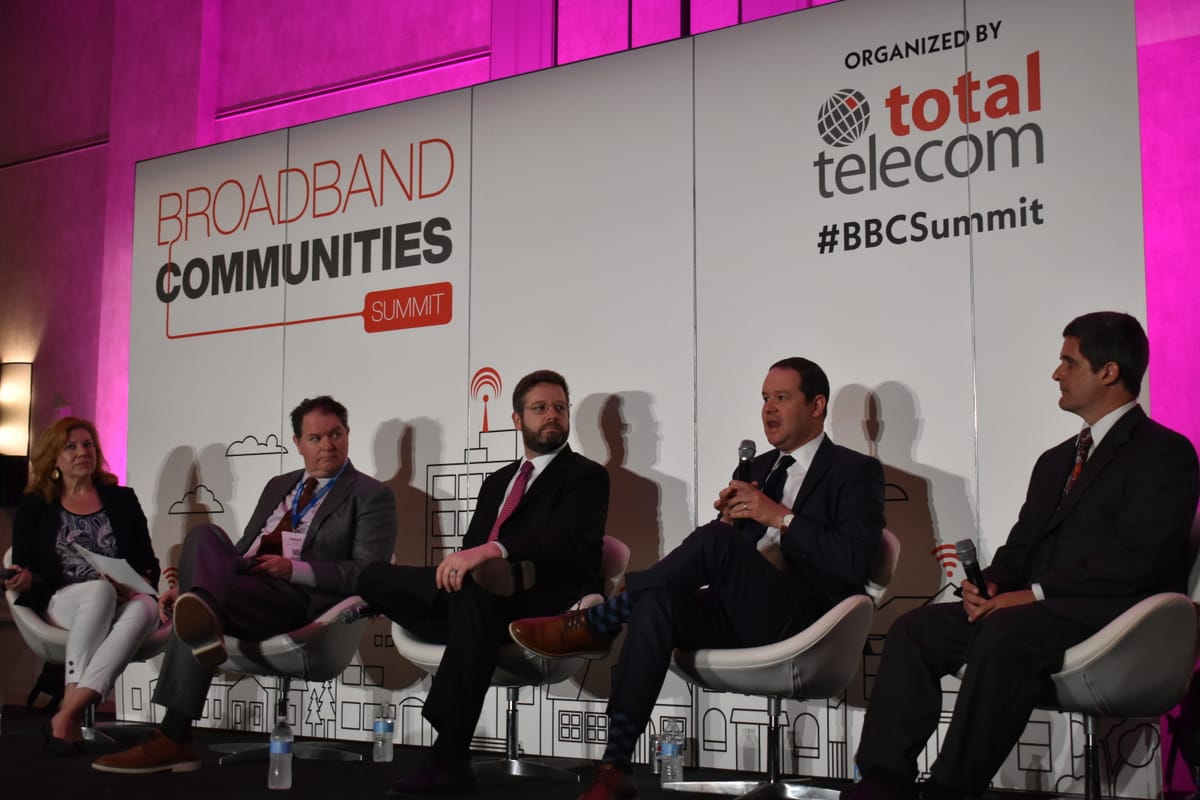NTIA to Release Guidelines for Alternative Broadband Technologies Under BEAD
The NTIA aims to influence the use of alternative technologies to fiber optics and streamline permitting processes with new guidelines.
Jericho Casper

HOUSTON, May 7, 2024 – The National Telecommunications and Information Administration is very close to releasing new guidance on the utilization of alternative, non-fiber-optic technologies by states under the $42.5 billion Broadband, Equity Access and Deployment program.
“Coming soon is this alternative technologies approach which is going to be a critical tool for administrative offices in achieving universal coverage,” said Evan Feinman, director of broadband equity at the U.S. Department Of Commerce’s NTIA, at the Broadband Communities Summit on Tuesday.
During the panel session, Feinman, alongside representatives from the Federal Communications Commission, the Department of Commerce, and the Treasury Department, provided updates on the broadband programs each is respectively managing.
The NTIA will also be releasing updated guidance on the permitting process associated with the construction of broadband networks under BEAD, Feinman said.
“We know that there's a significant challenge around permitting in the construction of telecommunications networks,” Feinman said. The NTIA is “working hard to get as many tools out as possible about where there are existing right-of-ways.”
“We are taking a very aggressive approach to make things as smooth and streamlined as possible, while still making sure that we're meeting our obligations to follow federal environmental and historic protection standards,” Feinman said, adding that the agency is very close to releasing a version of federal permitting with the program.
Trent Harkrader, chief of the Wireline Competition Bureau at the FCC, described the Affordable Connectivity Program as a great success, yet acknowledged the frustrations associated with managing the program and securing additional funding.
ACP has provided eligible households with low or no cost monthly internet subscriptions for two years, but will run out of funding at the end of May.
Still, Harkrader emphasized the FCC's readiness to rebuild the program, if it is allocated additional funds.
"If we get additional funding [from Congress], we’re ready to rebuild this program. There's no better short-term fix right now," Harkrader explained, remaining optimistic about future developments.
Harkrader highlighted requirements from Congress for the agency to collect better data on broadband availability, discussing mandates from the Broadband Data Act. The FCC is expected to release its fourth version of the national broadband map in the coming weeks, which has evolved due to challenges from individuals and communities about discrepancies observed in the map.
Joseph Wender, director of the Capital Projects Fund at Treasury, said that the $10 billion fund has approved projects in all 50 states, amounting to approximately $9.6 billion in funding. The investment will enable more than 2 million new locations to access broadband with 100 Megabit per second (Mbps) symmetrical speeds by the end of 2026.
Shawn Arner, deputy assistant administrator at the USDA, highlighted the $2 billion allocated for broadband through the ReConnect program under the Infrastructure Investment and Jobs Act. He called attention to the grant application window currently open for ReConnect, which is set to close on May 21, 2024.
Additionally, the USDA plans to process grant applications through the Community Connect Program soon, and announce award recipients shortly thereafter. The program is designed to fund broadband deployment into rural areas where it is not yet economically viable for private sector providers to deliver service
Harkrader highlighted the high level of interagency coordination required to coordinate the federal government's involvement in broadband.








